
Movement skills are an essential element of a child’s overall development and play a significant role influencing physical, psychosocial, and mental health. Movement skills can be broadly classified into two major categories, gross motor skills and fine motor skills.
Fine motor skills are skills in which the precision of movement is the primary requisite for performance success. Fine motor skills are typically accomplished by recruiting small muscle groups such as those of the fingers, hands or forearms and may place a high premium on hand-eye coordination. These include handwriting, sewing, buttoning a shirt, tying the laces etc. (Edwards, 2010Motor learning and control: From theory to practice. CA: Wadsforth Cengage Learning Inc.).
Gross motor skills are skills in which the contributions of muscular force are the primary requisite for performance success. Fundamental motor skills such as walking, running, jumping, throwing, balancing or climbing typically involve many muscle groups and frequently movement of the entire body (Edwards, 2010).
Motor skill development and performance are constrained by the interaction of three components: the person, the task and the environment (Renshaw & Chow, 2018A constraint-led approach to sport and physical education pedagogy. Physical Education and Sport Pedagogy.).
Movement skills must be taught and practiced in order to reach a level of mastery, known as one’s movement proficiency (Wrotniak et al., 2006The relationship between motor proficiency and physical activity in children. Pediatrics.). There are some specific conditions influencing the development of motor skills, however, a sedentary lifestyle and physical inactivity might be significant influences also.
- Use various equipment for the games and exercises (different size of balls, targets, distances for throwing etc.). (DLDevelopment delay) (PLPhysical limitations)
- Use good practical examples of the skill technique (pictures, videos, teacher’s example). (DL) (PL) (ADHDAttention deficit hyperactivity disorder)
- Ensure that each child is included in the games.
- Provide space for children to discuss their movement challenges.
- Adapt the movement situation arranged by the teacher in which the students’ movement activities take place.
- Use differentiation to encourage children to choose their own level of difficulty.
- Adapt games and activities to make them developmentally appropriate for all children.
- Ensure that the children understand the movement and know how to perform it. (DLDevelopment delay) (PLPhysical limitations)
- Develop signs and gestures to provide children with feedback on their level of performance.(ADHDAttention deficit hyperactivity disorder) (ASDAutism spectrum disorder) (DL)
- Value diversity and consider equity of experience for all children.
- Give pointers aimed at the execution of an action or by highlighting a certain part of the action.
- Provide physical assistance by giving a slightly modified assignment or task.
- Focus on effort and improvement.
- Show a positive attitude towards learning and give positive feedback.
- Provide regular feedback on the performance and process of participation.
- Encourage peer support.
- Encourage children to express their movement challenges/difficulties.
- Build trust so that children can ask for help.
- Avoid group pressure, offer individual learning opportunities as an alternative.
- Try to find the skills where children have developed proficiency so they can show their strengths. (DLDevelopment delay) (PLPhysical limitations)
- Identify aspects where the child needs further support and provide opportunities to work specifically on these. (ADHDAttention deficit hyperactivity disorder) (DL) (PL) (ASDAutism spectrum disorder)
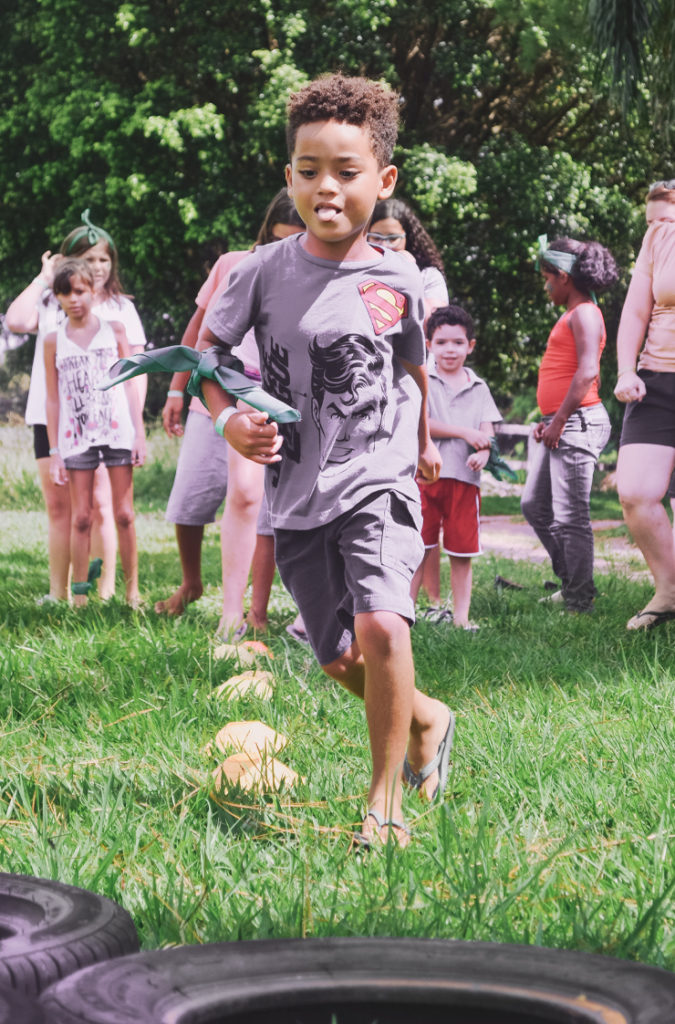
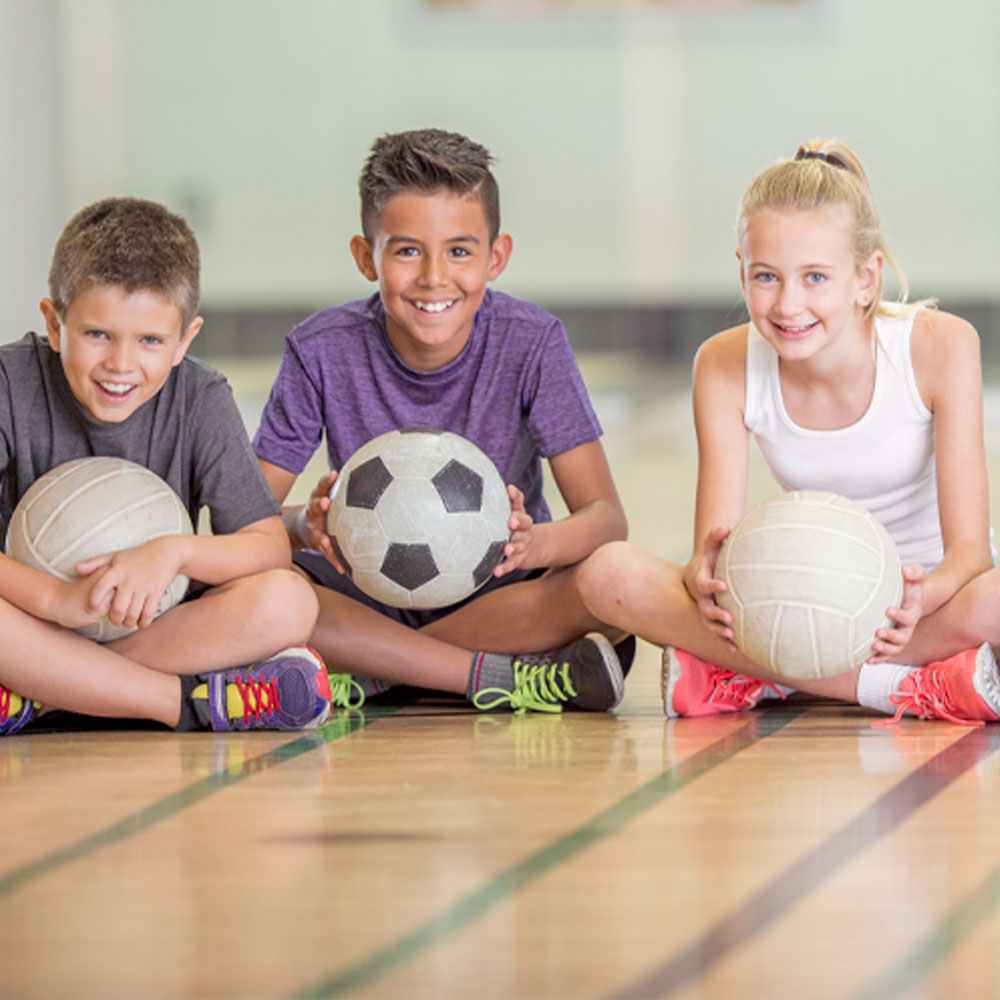
Gross motor skills (1)
Michael needs some encouragement to practise ball throwing. The teacher can encourage Michael to choose the size and type of the ball that he would like to use for throwing. Additionally, the teacher prepares different sizes of targets on the wall, so that the children, including Michael, can decide, which target to use. Each target will have three different lines in front of it, so that it is possible for children to start from the closer one and continue with the lines that are further away. This will enable Michael to choose the level of difficulty that he feels comfortable with and when he masters this, he will be motivated to undertake the more difficult challenge. Alternative throwing games should be used instead of the more typical ‘dodge ball’. Two groups of children are placed on the lines about 10m from each other. Some gymnastic balls or kinballs are placed between the two lines. Each child has a ball and when the game starts, the children will throw the ball at the kinballs or gymnastic balls, which are targets. To make it more competitive, each group will try to move the balls to the area belonging to the other group.
Gross motor skills (2)
Simone requires assistance with her running technique. Firstly, the teacher tries to focus on Simone’s running technique. The teacher sees that she does not use the arms correctly and that her stride length is quite short. The teacher explains these two points to Simone and suggests recording her on the video, so she can see herself in the movement. She also shows Simone the correct technique on the video as well as encouraging Simone to examine her own technique using the video. In addition, the teacher realises that Simone might not be a fast runner, but notices that she has good endurance. The teacher ensures that there are opportunities for longer distance running in the PE class; furthermore, the teacher offers Simone opportunities to participate in some long-distance competitions to help her become enthusiastic again about running.
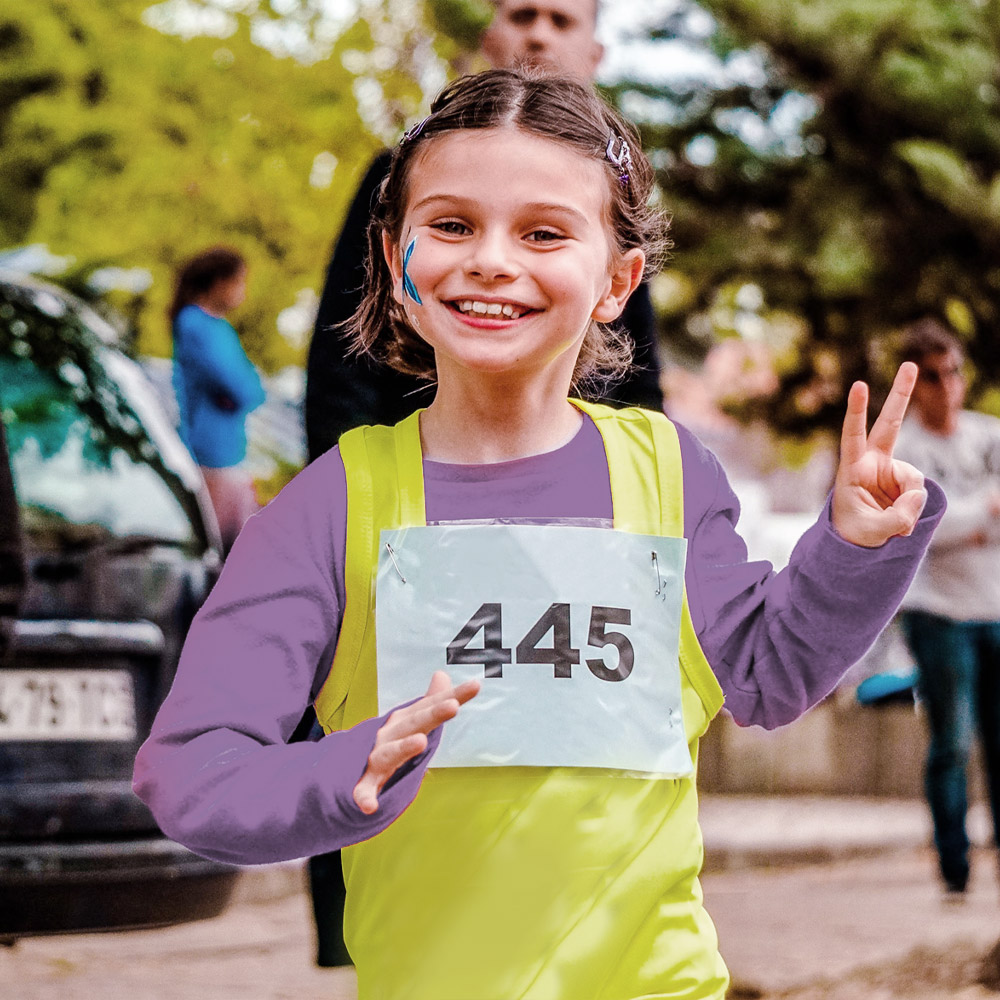
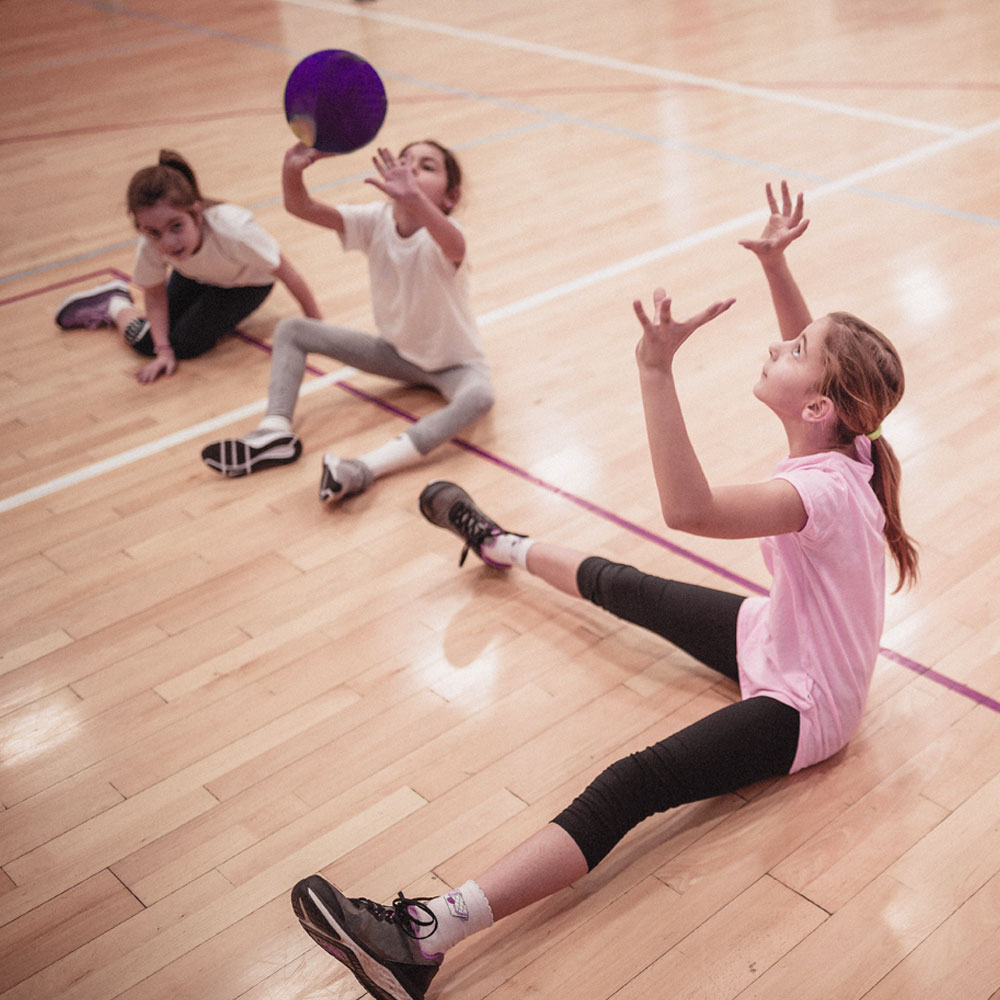
Gross motor skills (3)
As Sam has difficulty catching, the teacher offers children different materials for catching; Sam finds some are difficult to catch (e.g. too small and slippery). The teacher uses light scarves or pieces of light fabrics in a game “Move and Catch”. The children stand in a circle, each child with a scarf in her/his hand. The teacher firstly explains that after saying “left” the children will throw the scarf in the air and move one step to the left. Each child will try to catch the scarf of the child on its left side. Next, the teacher will change the direction and then will call the directions faster. The scarfs are easy to catch and Sam feels involved and successful. The teacher can then use balloons or beanbags. Having built up confidence then Sam may be ready to begin to use a ball and other equipment to catch.
Fine motor skills
The teacher sees that Robert’s laces are never tied during the PE classes and he considers this dangerous. The teacher asks Robert to show him how he ties his laces and that he might have another easier way of doing it. After some attempts, the teacher prepares a game in pairs where the children are responsible to tie the laces of their classmates. Where someone cannot do it, the classmate will try to help. To practise this in a game, the teacher divides the children into four groups. Each child needs to take off their shoes and put them in the middle of the gym. After the signal from the teacher, one child from each group runs to the middle of the gym to get his or her own shoes and put them on, then, another member of the group can run. The winner is the group with all shoes on first.
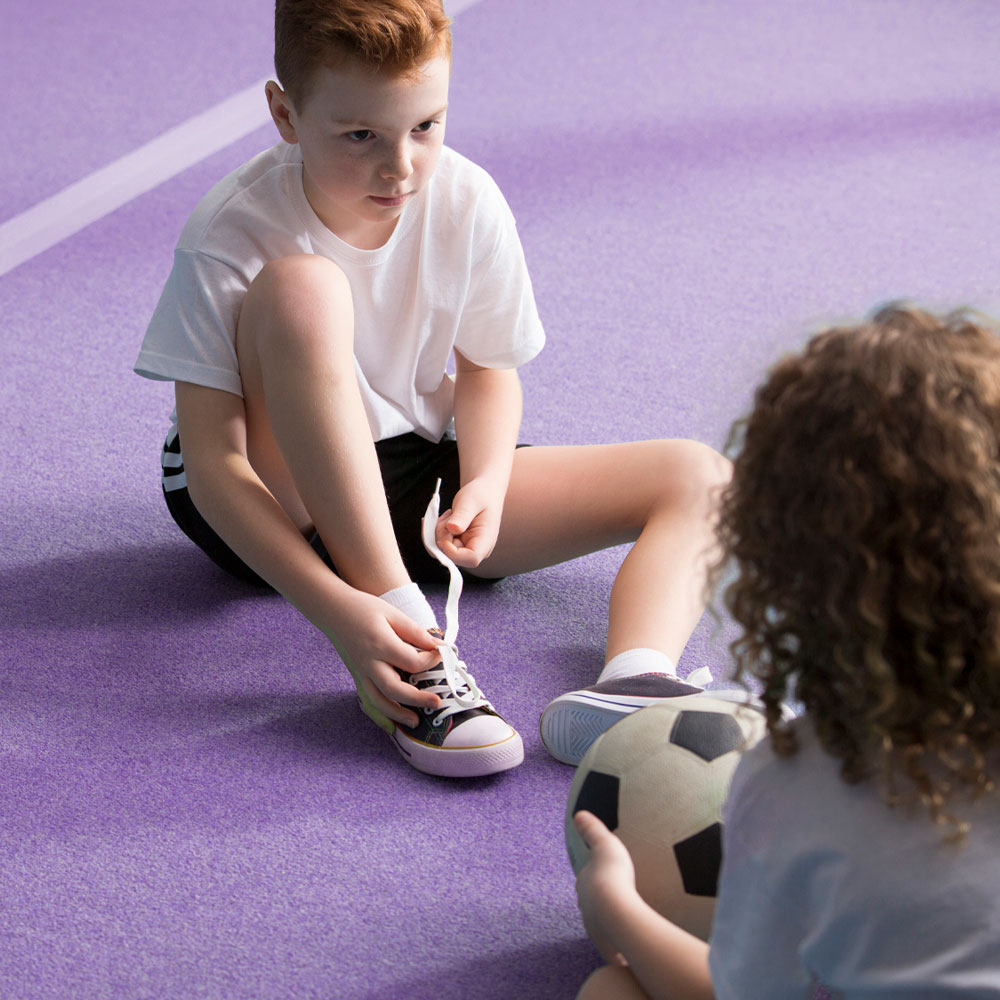
Clark, J. E.., & Humphrey, J. (Eds). (2002).
Motor development: Research and reviews. (Vol 2, pp 163-190.). NASPE publications: Reston, VA.
Mast, D. Savelsbergh, G., Hoeboer, J. J., & De Vries S.I. (2017).
Children’s enjoyment of a motor skill test in physical education. Journal of Physical Education Research, 4(4), 1-16.
Mooij, C., Berkel, M. van, Consten, A., Dames, H., Geleijnse, J., Greft, … & Tjalsma, W. (2004/2011).
Basis document bewegingsonderwijs voor het basisonderwijs. Zeist: Jan Luiting Fonds.
Hoeboer, J. J., Ongena, G., Krijger-Hombergen, M., Stolk, E., Savelsbergh, G.., & de Vries S. I. (2018).
The athletic skills track: Age and gender related normative values of a motor skills test for 4- to 12-year-old children. Journal of Science and Medicine in Sport, 1440 – 2440.
This resource describes an athletic skills track used to assess fundamental movement skills among 4 to 12 year-old children in a physical education setting. In this publication the process and product of motor development is described using the metaphor of “the mountain” which emphasizes the cumulative, sequential, and interactive nature of motor skill development as an emergent product of lifelong changes in multiple sources of constraint on behaviour.
Renshaw, I., Chow, J., Davids, K.., & Hammond, J. (2010).
A constraints-led perspective to understanding skill acquisition and game play: A basis for integration of motor learning theory and physical education praxis? Physical Education & Sport Pedagogy.
Whitehead, M. (2010).
Physical Literacy: Throughout The Lifecourse. UK: Routledge.
Hoeboer, J.J.A.A.M. & Klingberg , B.M. (2019)
Validity and feasibility of an obstacle course to assess fundamental movement skills in a pre-school setting Journal of Sport Sciences 37
Read moreHerrmann, C., Bund, A., Gerlach, E., Kurz, D., Lindemann, U., Rethorst, S., Scheuer, C., Seiler, S.,… & Pühse, U. (2015)
A review of the assessment of basic motor qualifications and competencies in school. International Journal of Physical Education
Download PDFKrop, M.., & Groeneveld, R. (n.d.)
Krukken geen bezwaar: Leerlingen met motorische beperkingen. Lukt Ut producties.
This book provides a large amount of exercises/learning material for students with motor skill challenges in regular movement education.
Read moreScheuer, C., Herrmann, C., & Bund, A. (2019)
Motor tests for primary school aged children: A systematic review. Journal of Sports Sciences, 37
Read moreKnowledge center for sport netherlands
Ideally, children should be given exercises during the lesson that are appropriate to their level of movement, that challenge them sufficiently and teach them to move (even) better. However, as a teacher it is not always easy to give differentiated lessons. The HAN (PE Teacher Education Institute Arnhem Nijmegen) Movement Programme is based on the Athletic Skills model, Principes van het Athletic Skills Model (ASM) Principes van het Athletic Skills Model (ASM) and on the curriculum framework of the ‘Basisdocument bewegingsonderwijs voor het basisonderwijs’
Read morePDST, Move Well, Move Often: Developing the physically literate child through the lens of fundamental movement skills. Teacher Guide, PE Curriculum, Dublin, 2017.
This resource, entitled Move Well, Move Often, has been designed to complement the teaching of the Irish Primary School Physical Education (PE) Curriculum and aims to provide a range of tools to support the teacher in promoting physical literacy through teaching fundamental movement skills. Within this section you will find three books of skills and activities video exemplars (LINK) to illustrate the individual locomotor, stability and manipulative skills and guidance on planning, assessment and strategies for supporting children who may have difficulties (LINK)
Mooij, C., van Berkel, M., Consten, A., Dames, H., Geleijnse, J., van der Greft, M., Hazelebach M., Koekoek, C., Pieters, L.... & Tjalsma,W. (2004/2011)
Basisdocument bewegingsonderwijs voor het basisonderwijs. Zeist: Jan Luiting Fonds.
This curriculum framework describes 12 learning-teaching trajectories for physical education in primary schools that are subdivided into 31 movement themes, in which a certain movement challenge is central. Each movement theme is elaborated in examples of core activities (where the movement challenge is very much present and where 80% of the students can participate). The core activities are described at four levels of participation, with participation at the lowest level indicating that care/ extra help is needed. Much attention is also paid to providing learning support. This is linked to the different levels of the intermediate goals. An important starting point for this is that the learning support is offered on a tailor-made basis. It describes how learning aid can be given to the moderate movers and how the teacher can help the better moving children. The regulation of the activity by the children is a fixed, recurring topic. This curriculum framework is supported with a link to videoclips with examples of the core activities and the related learning support possibilities for the teacher.
Read moreScheuer, C., & Heck, S. (2020)
Modular Support Toolkit for Teachers. Esch-Alzette: University of Luxembourg.
In the frame of the BMC-EU project (Basic Motor Competencies in Europe), a support framework and a modular support toolkit on the basis of the concept of basic motor competences has been developed. The aim of this toolkit is to be implemented mainly in regular physical education lessons, to initiate adaptations to the content and methods of physical education instruction.
The support framework was developed to support getting from the diagnosis of the students’ basic motor competencies and the strengths and weaknesses identified in the assessment to concrete interventions. Based on this framework, a modular support toolkit was developed, ready to be implemented in concrete educational situations to support students with additional needs in basic motor competencies.
Van Gelder, W.., & Stroes, H.
Leerlingvolgsysteem bewegen en spelen.
A pupil monitoring system using the OMT test: A motor test suitable for physical education, to analyse different aspects of motor development, after which a motor remedial teaching program can be written to suit the additional needs of the individual pupil.
Voor iedere gymles een goed idee!
A good idea for every gym class... that's how Gymspiratie came into being. Once started with a Dropbox folder full of inspiration, there is now an online community where you can watch more than 787 gym games. Inspiring blog posts with lesson tips are available here. Guidance on creating period planning is available online.
Read morePhysEd Club – Inspiring lessons for each PE class!
This site contains Physical Education games suitable for specific needs which can be found quickly and favourite games can be saved for future reference.
Read moreTelocvikari
A special website for physical education teachers with ideas, comments, news and recommendations for teachers in everyday practice.
Read moreGross Motor Skills vs. Fine Motor Skills: What’s the difference?
Explanation of gross and fine motor skills
Watch videoKnowledge center for sport netherlands
108 new and creative lesson cards which challenge children to develop different coordination abilities.
Read moreBetter movers and thinkers
An approach to learning and teaching in physical education designed to develop the ability of all children and young people to move and think in a more cohesive way with a specific focus on developing, enhancing and fostering executive function skills within the learning process.
Read moreSalvesen mindroom centre resources: videos, app and leaflets.
Circle Resource this resource aims to bring together and share good inclusive practice, focusing on approaches to improve the engagement and achievement of all learners including those who require additional support
Read more- Ahnfeld, T. (2018). Visuelle Unterstützung beim Anleiten von Kleinen Spielen für sprachlich heterogene Lerngruppen [Visual support for teaching small games to learning groups being heterogenic in language]. Master thesis. University of Leipzig.
- Alvare, S., Dugan, D., & Fuzy, J. (2005). Nursing Assistant Care. Albuquerque, New Mexico: Hartman Publishing.
- I CAN (2019). Talking Point – Useful Information











